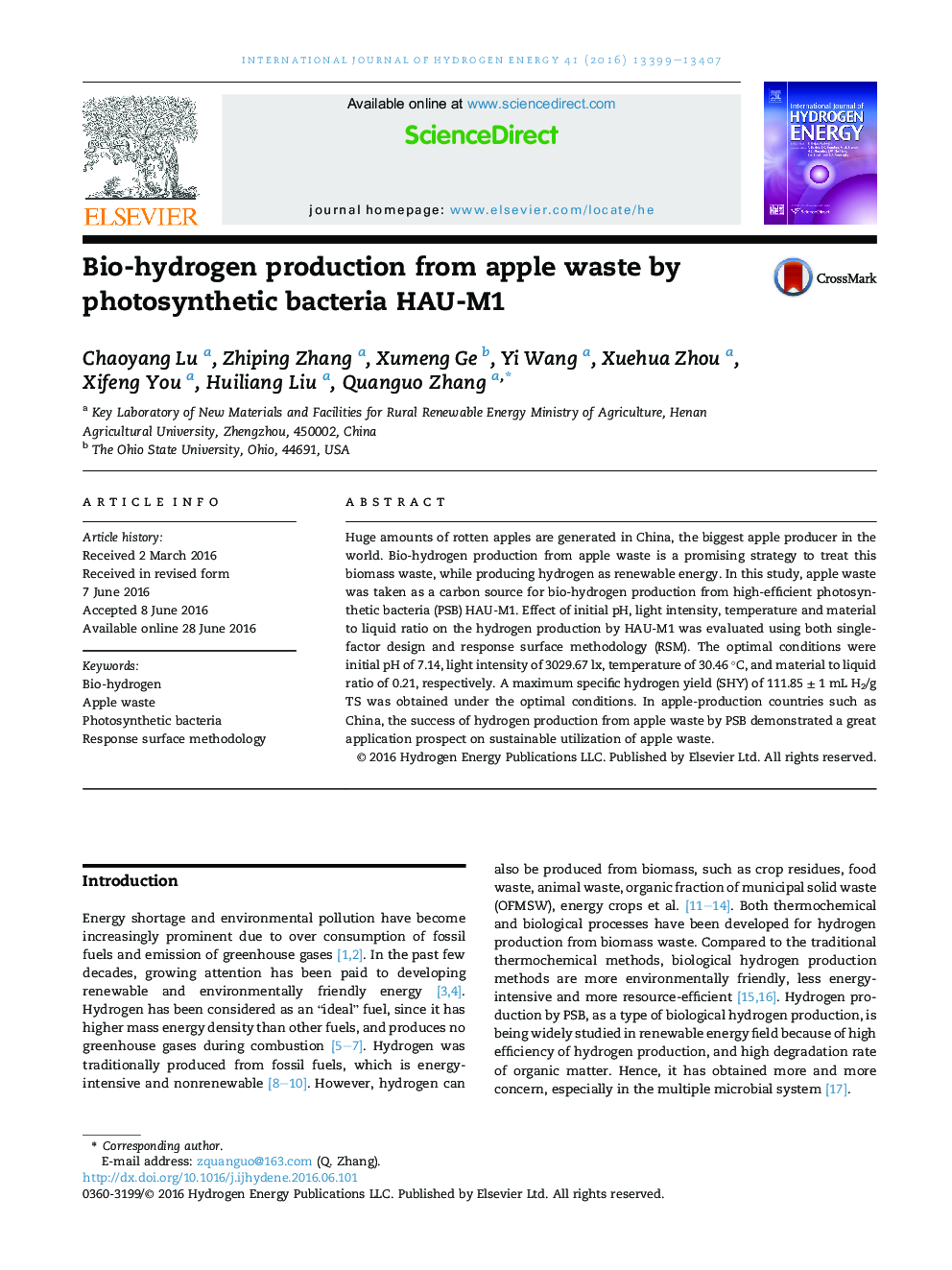| Article ID | Journal | Published Year | Pages | File Type |
|---|---|---|---|---|
| 1276453 | International Journal of Hydrogen Energy | 2016 | 9 Pages |
•The feasibility of rotten apple's efficient utilization was analysed.•Effects of process parameters on hydrogen production with high-efficient photosynthetic bacteria HAU-M1 were investigated.•Response surface methodology was used to optimize hydrogen production.•Regression equations were established to analysis hydrogen production.
Huge amounts of rotten apples are generated in China, the biggest apple producer in the world. Bio-hydrogen production from apple waste is a promising strategy to treat this biomass waste, while producing hydrogen as renewable energy. In this study, apple waste was taken as a carbon source for bio-hydrogen production from high-efficient photosynthetic bacteria (PSB) HAU-M1. Effect of initial pH, light intensity, temperature and material to liquid ratio on the hydrogen production by HAU-M1 was evaluated using both single-factor design and response surface methodology (RSM). The optimal conditions were initial pH of 7.14, light intensity of 3029.67 lx, temperature of 30.46 °C, and material to liquid ratio of 0.21, respectively. A maximum specific hydrogen yield (SHY) of 111.85 ± 1 mL H2/g TS was obtained under the optimal conditions. In apple-production countries such as China, the success of hydrogen production from apple waste by PSB demonstrated a great application prospect on sustainable utilization of apple waste.
